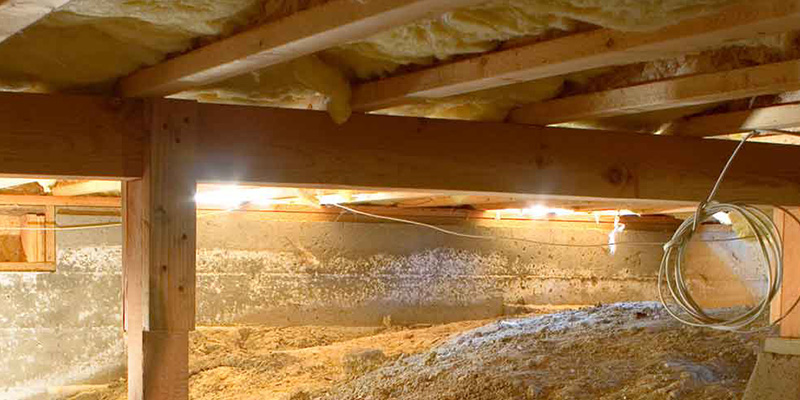
Insulating your Crawl Space with Spray Foam Insulation
Crawl space insulation can be a great way to provide a warm and cosy environment in your home, however, if not done correctly, you can be creating more issues, from soggy insulation to rodent infestations and more. There are a variety of insulation types used to insulate a crawl space, such as fibreglass batts, cellulose, spray foam and more, yet, only a few have seen crawl space areas successfully insulated for the long-term. Your crawl space is subject to dampness, air leakage, rodent infestations and other disasters, therefore, investing in crawl space insulation needs to be done correctly, in order to prevent these risks.
What is a Crawl Space?
When buying a new home, it is always a good idea to check whether a crawl space is listed and, if so, you should inspect it. A crawl space is just a hollow area underneath the floor of homes, around 30cm – 90cm high. Crawl spaces make for an ideal area for storage of certain things such as duct work, air conditioning, heaters, insulation, plumbing or wiring.
Insulating your Crawl Space
Crawl space insulation is important in order to protect your home from cold air entering. By sealing air leaks in crawl spaces via crawl space wall insulation, you can protect the internal contents from freezing temperatures across winter months. If your crawl space is used for storage for items such as HVAC ducts, plumbing pipes or the like, then insulating this area well can mitigate problems due to temperature of an uninsulated area.
When insulation a crawl space, you want to make sure that the rim joists are insulated, these joists rest on the top of your foundation walls. The foundation also needs to be insulated. This can provide thermal and structural benefits. It is also important to include a vapour barrier of some sort, to remove and stop dampness from forming, if your crawl space becomes moist then you will be prone to issues. Other things you can do to insulate your crawl space is to seal all vent openings, seal any hatchways to the exterior, wall insulation and water-resistant insulation. Additionally, it is important to note that before undertaking crawl space insulation, it is important to eliminate all sources of water in your crawl spaces, before moving on.
Why use Spray Foam Insulation for your Crawl Space?
Well, apart from the fact that closed-cell spray foam insulation can be easily installed into hard-to-reach spaces (such as a 30cm high crawl space), the specifications of using spray foam meet and exceed requirements for crawl space insulation. Crawl spaces need to be insulated correctly; this means:
- Seal the joints
- Prevent water entering
- Reduce/remove moisture
- Prevent rodent infestations
- Thermal insulation
- Seal hatchways
- Air and vapour barrier
These requirements are all met by the simple, yet brilliant, spray foam insulation product. When using closed-cell foam insulation, your crawl space will experience the benefits of both thermal and moisture protection. The composition of closed-cell foam is perfect for preventing the passing of water, it is air impermeable, seals all air leaks and has excellent thermal properties. Additionally, this type of foam insulation is not an edible insulant for rodents, preventing creating a hospitable environment for them. Therefore, closed-cell spray foam meets the requirements for insulating crawl spaces and can execute and deliver the results you want. Other insulants such as cellulose, fibreglass and mineral wool do not have the same benefits for your crawl space as when using closed-cell foam. Some soak in water and moisture and eventually sag, some do not seal off gaps and some do not have thermal benefits as good as closed-cell foam insulation.
For more information about spray foam insulation or crawl space insulation, contact us directly at 0203 411 5188.


